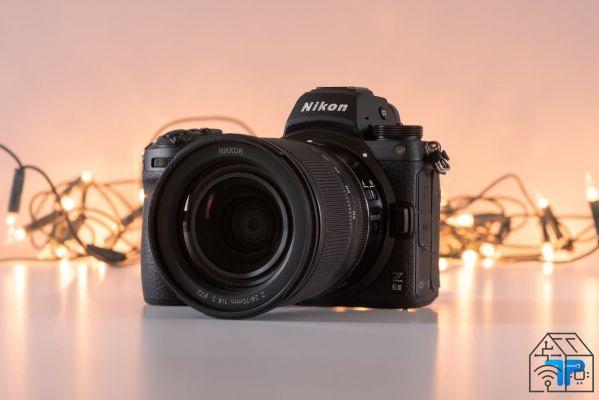
In the last two years we have almost forgotten the existence of a photographic system other than the mirrorless one. In fact, all the houses have concentrated on enriching their mirrorless range, making this segment the most prosperous and important on the market. Nikon in these two years it has always seemed a step backwards to Canon, Panasonic and obviously Sony, which had already invested in this direction for many years. With the new generation of mirrorless cameras from Z seriesHowever, Nikon seems to have bridged the gap with the competition, bringing small but significant changes with the new versions of Nikon mirrorless Z6 II and Z7 II. Get ready to discover all the news of this mirrorless camera by reading the full review.
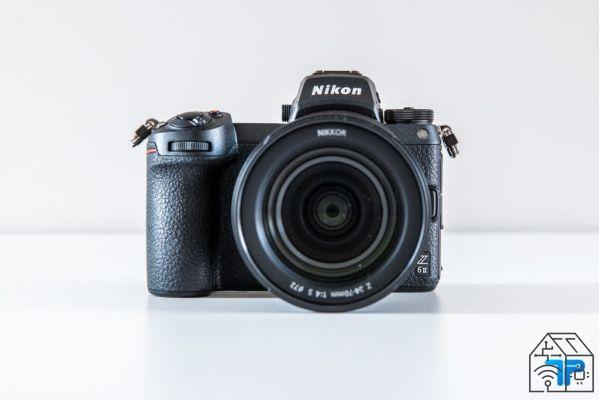
Nikon Z6 II: the review
La Nikon Z6 II camera, the model I have spent the last few weeks with and which I will tell you about in this review, is the updated and improved version of Nikon Z6. As with the previous model, which it resembles both in aesthetic and ergonomic terms, this new version features the same 24MP sensor and same video performance. However, the Z6 II can rely, in the first place, on a dual data processing processor Expeed 6, which has brought significant improvements in terms of performance. In fact, if from an aesthetic and ergonomic point of view nothing changes compared to the classic Z6, the news is inside of this new mirrorless camera.
Mirrorless Nikon Z6 II: corpo ed ergonomics
The new Nikon z6 ii is the hybrid model of the house, which goes to position yourself halfway road between the flagship of the segment full-frame mirrorless Nikon Z7 and the smaller Nikon Z5. When it comes to design, all three cameras look a lot alike. The choice to preserve a similar body and ergonomics is definitely a advantage, in terms of user experience, for those who need to have two cameras of the same series, perhaps to be used for different purposes, or for those who need to switch from one model to another. Among the three, only the Nikon mirrorless Z5 - of which I told you here - has anything less than the other two camera models, but in practice both the layout of controls and the dimensions of the Z5 are almost equal to the Z6 II and to the Z7.
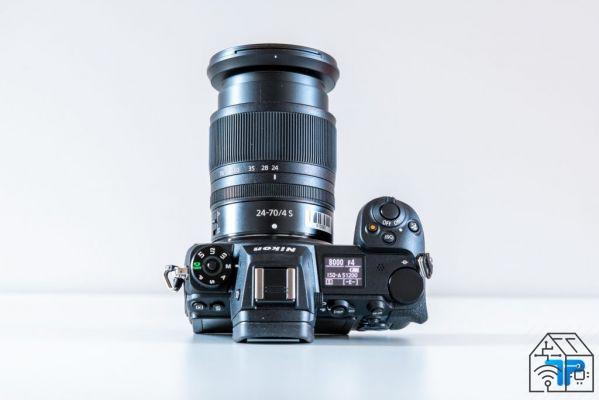
Camera body: Nikon Z6 vs Z6 II
Compared to the first version of mirrorless Z6, the only distinctive sign of the new Nikon model is the initials Z6 II that we find on the body, for the rest of the news there are none. However, this means that in our hands we have a solid mirrorless camera, well built and above all with a very comfortable grip. Dial and controls are easy to reach, including the two customizable buttons located near the bayonet. The magnesium alloy body it generally offers a good balance between weight and solidity and is also resistant to atmospheric agents.
On the back of the camera body there is same electronic viewfinder that we had seen on the Z6, which in absolute terms is not the best that the market offers in 2020, but still remains a good level viewfinder, quite fluid and with good color rendering. Unfortunately, I could not verify what Nikon says about the refresh rate, which should reduce the blackout time compared to the past. These situations should be verified in the sports field and these days it is not easy to organize unfortunately.
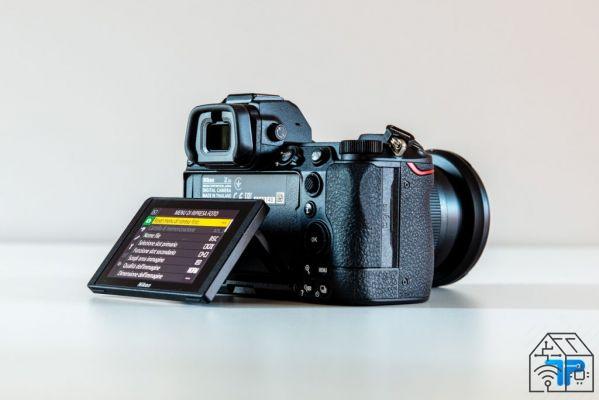
Staying on the back of the body, I was sad to see Nikon once again opting for a tiltable display only on the vertical axis and not fully articulated. From an ergonomic point of view this is the only criticism that can be moved towards the Nikon Z6 II.
Nikon Z6 II: new battery and dual card slots
Beyond a few small notes, the Z6 II camera is certainly well built and can also count, beyond the aesthetics, on two useful and functional news. I'm talking about the battery and memory card slots.
In the first case, we find the last EN-EL15c, a battery with the same format as the previous ones but characterized by 20% more capacity. Besides, it can be powered and recharged directly via the USB-C interface. For those who have Nikon cameras with batteries of the same size but in previous versions there are no compatibility problems: you can use your batteries on the Z6 II as well.
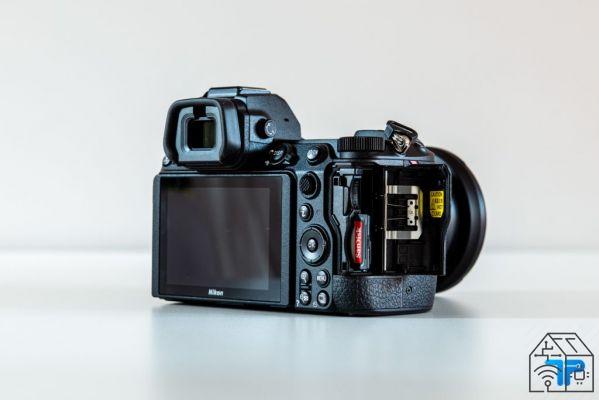
Speaking instead of memory cards I find the double slot is a fundamental and right addition. On Z6 we only had the possibility to use XQD cards, which are safer and faster but also much more expensive than SD. It was perhaps a gamble to anticipate the times in this way, so much so that then the market took the direction of CFexpress rather than XQD. On Nikon Z6 II we can now use both XQD and CFexpress cards (they have the same format as the first ones) and the more traditional SD cards.
Nikon Z6 II: performance and image quality
The performance of the Nikon Z6 II mirrorless camera has remained virtually unchanged from the previous model. This generally means many details, excellent performance in low light conditions, Ready-to-use JPEGs with warm and pleasant tones. And all this, it must be said, is good. The new chamber is in fact confirmed as an excellent instrument, reliable and characterized by a very wide dynamic range, also thanks to the Dual Gain Sensor, which in practice allows you to control and keep noise low even at high ISO.

Nikon Z6 II: color rendering
Looking in more detail, we can appreciate the rendering of greens, yellows and even reds. All these shades are very natural and rich in shades. Overall, the color rendering is really pleasant, with an overall warm tone which, as you will see in the test images of this review, gives an excellent rendering of the complexions. Also good rendering of details, including the finer ones. In principle i results obtained with Nikon Z6 II are in line with the most direct rivals come Canon R6, Lumix S5 e Sony A7III.
Dynamic range and ISO sensitivity
The capabilities of this sensor, for which an upgrade was rightly not necessary, are remarkable even if we talk about dynamic range. At most low ISO sensitivity, the results are extremely clean and offer shades of color and detail in both shadows and highlights. With this Nikon Z6 II we don't have to be afraid to raise the ISO if necessary, up to 12.600 the results are absolutely usable. If you want you can even go to ISO 25.600, even if a loss in detail will be evident. What amazes across the entire range is the color reproduction, which does not undergo noticeable changes even in Hi-ISO mode.
AF performance and speed in operations: the real news
In the field test and in uncontrolled conditions such as those of the tests above, Nikon Z6 II impressed me with excellent reactivity. I speak both of AF performance that in general of speed in operationsthat I am the real novelty and the real strength of this mirrorless. The improvements in this case are there and they can be seen, thanks to dual processor Expeed 6 and some novelty in the autofocus system.
Il people tracking is accurate and works by taking advantage of the Eye Detection, Face Detection modes or simply trying to keep the focus in the same portion if the subject strays too far. In these cases, when the subject is no longer recognizable, you can quickly switch to the convenient and precise mode Area AF Auto which is often a valuable aid. Much it also specifies the focus on the eyes, perfect ally of portrait photographers.

These good performance of the AF system can be found also in the video field. This testifies to how a big step forward has been made compared to the previous mirrorless camera model, although apparently the differences are few. Nikon has in fact focused more on the usability of the medium than on improving the individual technical specifications, perhaps finding itself with the same problems as in the past.
Image details
Looking instead at the details produced by Nikon Z6 II the level is good with the kit lens we used, the 24-70mm f / 4. But we realize the real potential of this camera if we mount, for example, a lens through the FTZ adapter Nikkor AF-S 105mm f/1,4E ED, with which I made some of the photographs of this test. The combination of the Z6 II with this lens produced extremely sharp images throughout the frame, with exceptional detail. The possibility of shooting with such a wide aperture allows you to play with the depth of field and obtain almost three-dimensional effects.
Nikon mirrorless Z6 II: video
The ergonomics of Nikon Z6 II will certainly also be appreciated by those who use it in the video field. The ease of navigation in the menu, which maintains uniformity with the previous models, allows you to reach the cards dedicated to video without problems. Also, have a so compact full-frame body also allows theuse on gimbal stabilizers, a factor not to be underestimated. Nevertheless, the integrated stabilization system it does its job very well, so even freehand you can record very still clips.
Colors and autofocus, as already mentioned, they are very good, with a dynamic range that is confirmed extended even in the video. Too bad there are some limitations, like the fact of not being able to record in 10 bits, exploit a Log or register in HLG except through an external recorder. Despite these shortcomings, we already know that Nikon Z6 II will enjoy several updates over the next few months. The first will arrive at the beginning of 2021, which will allow recording in the Super 35mm 4K / 60p format.
Nikon Z6 II: prices
Before we sum up the Nikon Z6 II mirrorless camera, let's talk about the price. The body only is for sale a 2,199 €while for the Kit used for the test, that is, the one that also includes FTZ adapter and Nikkor Z 24-70mm f / 4S lens, serve little more than 3,000 €.
The price to take this mirrorless home is in line with the most direct competitors and finally performance too. For those who come from an experience with the reflex cameras of the yellow and black house, this could certainly be the right time to make the leap to the mirrorless world without any risk. Nikon Z6 II is indeed a reliable camera with excellent performance. And I can't wait to try the big sister Z7 II too!
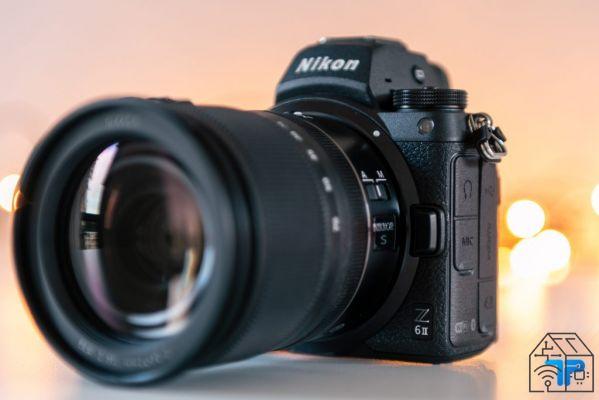
Conclusions
To conclude this review, what needs to be said is that if I were to make a comparison with the hybrid mirrorless cameras of other brands I would struggle to find any aspect where the Z6 II excels over the others. On the other hand, however, there is not even one aspect in which it can be said to be behind. To get to the point, it's fair to say that with the Z6 II it has reached the level that was expected from Nikon in the field of mirrorless cameras and that the gap has finally been completely filled. Now it is a matter of keeping the pace and perhaps expanding the family of dedicated optics, even if through the FTZ adapter we can fully exploit the potential of F-mount lenses. Just like I did with the 105mm.
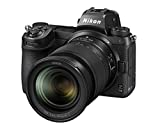 Nikon Z6II +24/70 f/4 S Fotocamera Mirrorless Full Frame,...
Nikon Z6II +24/70 f/4 S Fotocamera Mirrorless Full Frame,...
- The large Z-mount bayonet and the 24,5MP full-frame sensor allow for detailed and clean images ...
- Shoot full resolution photos up to 14fps with full AF / AE. Captures up to 200 JPEGs or 124 RAW images without ...
- Two processors double the power available for everything from AF to buffer capacity. The...


























